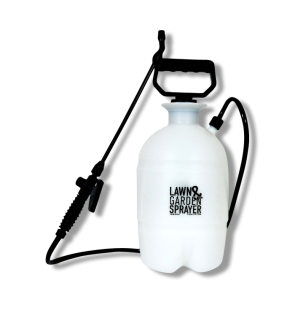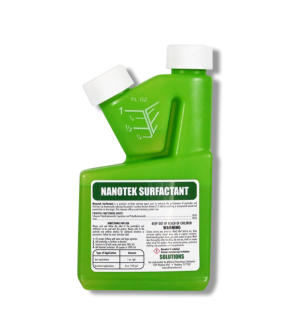Gain access to personalized product screening, the best pricing, rewards, and more!
Most Effective Products
Chamberbitter Control: How to Get Rid of Chamberbitter
This page is a general DIY guide for controlling chamberbitter. Using the suggested products and methods, you can control chamberbitter. Follow this DIY article and use the recommended products, and we guarantee 100% control of chamber bitterness.
Chamberbitter, also known as gripe weed, is an increasingly common invasive weed spreading heavily across country regions with more tropical climates. Chamber bitter is a broadleaf weed sprouts on warm-season grasses annually in early summer. It is believed that the weed originated in tropical Asia, but it has become a major lawn pest across the southeastern United States from Virginia to Texas.
This weed tends to prefer growing in conditions with excessively high temperatures or areas with long periods of drought. Because chamberbitter is drought tolerant and produces so many seeds, it isn't easy to control landscapes.
If you are having a problem with chamberbitter, we can help. Our DIY chamberbitter control guide was developed by our team of lawn care experts to show you exactly what you need to kill Chamberbitter and remove it from your yard quickly and affordably.
Identification
Before you can proceed with controlling chamberbitter, you need to make sure it is the weed you are dealing with. Misidentifying a weed can lead to using the wrong herbicide, which may be ineffective in treating it, costing you time and money. Here are the traits of chamberbitter to look for to properly identify it.

- Chamberbitter is a spurge family member that looks very similar to the leaves of a mimosa tree. It goes to seed when it is only about an inch tall.
- Chamberbitter is an annual summer weed. When mature, this weed forms a shrub about 1 to 2 feet tall.
- The leaves are oval or oblong and grow up to 3/4 of an inch. They grow in an alternating arrangement along the branch. When this plant flowers, the flowers are formed on the undersides of branches. Eventually, these flowers become seedpods, which scatter seeds, quickly spreading the weed’s presence.
Use the above description and image to help you properly identify chamberbitter. If you are having trouble, you can always contact us. Our lawn care experts will help you correctly idenfity your weed growth and suggest treatment options.
Inspection
After you have properly identified chamberbitter, you can proceed with the inspection. During this phase, you will need to locate where chamberbitter is growing, how severe an infestation is present, and the conditions helping it thrive. This information will help you know where to focus your herbicide application.

Where to Inspect
Chamberbitter is a warm-season broadleaf annual that appears in residential lawns, ornamental landscaping, and other disturbed areas with warm soils.
What to Look For
Chamberbitter is a summer annual that emerges around May or June when soil temperatures reach 70 degrees Fahrenheit. Once a chamberbitter plant starts to produce seed, it will continue to do so until the first frost, when the plant dies.
When mowing chamberbitter, the seeds can explode and spread everywhere over a large area. If you could find chamberbitter and break the stem, a milky white sap would ooze out from the stem, much like other spurge species.
Treatment
Before using any herbicide product, ensure you have the proper personal protective equipment (PPE) for safety (gloves, glasses, mask).
Chamberbitter is a difficult plant to control for various reasons. It grows quickly and can tolerate drought. Manual methods of control are not effective because the seeds explode and spread everywhere. The extensive taproot makes hand-pulling a largely useless option because the seeds will just pop up again before long.
Selective, post-emergent herbicides containing glyphosate, atrazine, 2,4-D, mecoprop (MCPP), or dicamba as their active ingredients are effective in controlling chamberbitter.
Step 1: Mix and Apply Celsius WG

Calculate the square footage of the treatment area to determine how much Celsius WG you will need. To do this, you will need to measure the treatment areas' length and width in feet, then multiply them together (length x width = square footage).
To treat the chamberbitter, mix the labeled rate of 0.085 ounces, or 2.4 grams, of Celsius WG with 1 gallon of water to treat every 1,000 square feet of the treatment area.
We recommend mixing with a surfactant like Nanotek Surfactant to increase the effectiveness of Celsius WG Herbicide.
When using Nanotek Surfactant, add 1 fl. oz. per 1 gallon of solution.
You can apply your solution with a handheld or backpack sprayer. Add half the water and pour in the measured Celsius WG Herbicide. Next, add the remaining half of the water and agitate the tank until it is well-mixed.
When applying, change the nozzle set to a fan nozzle so it sprays a fine mist on the plant and gets an even coating on the top and bottom of the chamberbitter leaves.
Do not use this product on bahiagrass or cool-season turf types, including tall fescue, fine fescue, Kentucky bluegrass, perennial ryegrass, or creeping bentgrass.
Step 2: Reapply
When applied properly, affected weeds will turn yellow and begin to die. Conduct follow-up applications as necessary. Reapplication intervals with Celsius WG range from 2 to 4 weeks after the initial treatment.
Applications are most effective when the plant is young and actively growing before flower or seed production.
Prevention
After you have eliminated the chamberbitter, you don't want it to come back. Chamberbitter requires a combination of mechanical, cultural, and chemical methods to get rid of the weed and keep it away.
- Mow your grass at proper intervals to maintain a thick growing density. A lawn dense with taller trimmed grass can better choke out weeds and prevent them from establishing.
- Reduce the shade cast on your lawn by trimming overgrown shrubbery and tree branches, raking away leaf litter and picking up any debris, and employing a proper watering schedule to provide the local grass with enough water to strengthen its roots but not so much that it encourages weeds. Many grasses require 1 inch of water every week. Apply the water all at once in the morning so it has time to seep into the ground without evaporating in the sun.
- Rotate ornamental landscapes each season after the chamberbitter weed has been controlled. By planting in a different area you help to avoid potential germinating weeds and increase ornamental foliage health.
Key Takeaways
What is Chamberbitter?
- Chamberbitter is a frustrating lawn weed that thrives in tropical conditions.
How To Get Rid of Chamberbitter
- We recommend a treatment of Celsius WG mixed with a surfactant like Nanotek Surfactant for post-emergent control.
Preventing Chamberbitter Reinfestation
- To prevent chamberbitter, implement proper cultural practices such as watering, mowing, and regular fertilization to make your yard less conducive to chamberbitter establishment.











